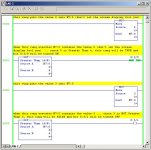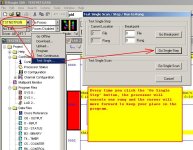jimpad
Member
Can a SLC 5/04 GEQ cmd compare floats or do they have to be integers? EOM
Thanks,
Jim
Thanks,
Jim
jimpad said:If I hard code the multiplied value into a dedicated register it does work.
jimpad said:So here's my question, are the comparison blocks executed in the order drawn or not?
jimpad said:How do you do that quote thing?
jimpad said:What I mean by hardcode is dedicating a register for use in the comparison rather than the working register.

jimpad said:I think I'm on the trail of it now... my working register seems to be getting messed up somehow. I've shutdown the subr where I do extensive math using the working register and now my A/T logic seems to be working.So, I believe my working register may be overflowing and maybe that precludes using that register for the remainder of scan.
93lt1 said:
is getting overwritten somewhere in there...


